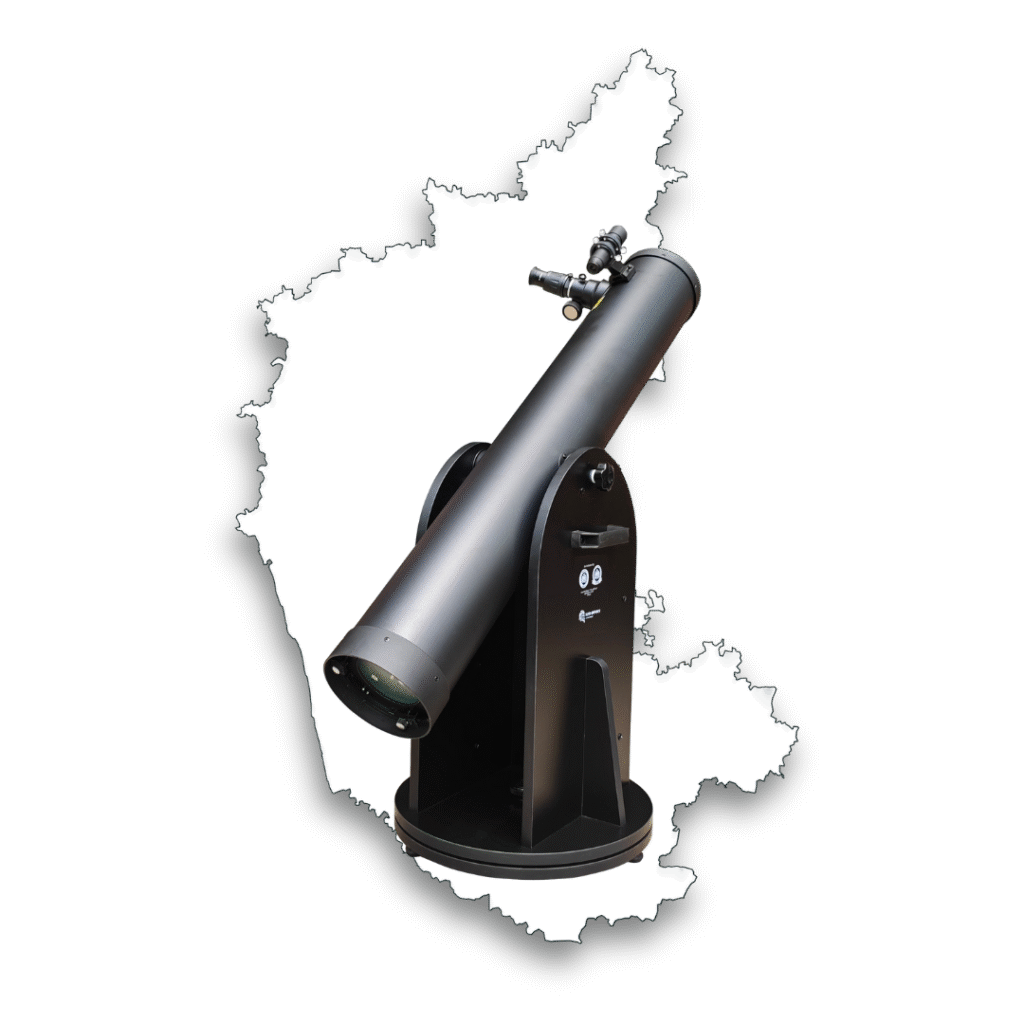Transforming Education: Mini Observatories in Karnataka Schools
The night sky has always inspired curiosity, but for many students, it has remained distant, something seen only in textbooks. That is now changing.
Through the efforts of the Karnataka Science and Technology Promotion Society (KSTePS) and with implementation support from Taare Zameen Par, 833 KREIS residential schools are being equipped with 6-inch Dobsonian telescopes. Each telescope represents the foundation of a mini-observatory, transforming schools into learning spaces where astronomy becomes a lived experience.
The Scale of the Initiative
This is one of the most extensive astronomy education programs in the country:
- 833 schools across Karnataka are receiving telescopes.
- Teacher training workshops prepare educators to guide students in sky observations
By combining resources, training, and delivery, the project ensures that the program is sustainable and impactful.

Why Mini Observatories Matter
A mini observatory is much more than a telescope. It is an entry point into science and discovery. With these observatories, students can:
- Observe the moon’s craters in detail
- Track the movement of planets like Jupiter and Saturn
- Explore deep-sky objects such as nebulae and clusters
For many rural students, this will be their first real view of the universe through a telescope. Such experiences help nurture scientific curiosity, critical thinking, and a spirit of exploration.
Educational Significance
This initiative, envisioned under the leadership of Hon’ble Minister Shri N. S. Boseraju, is among the largest astronomy outreach efforts in India.
By setting up mini observatories across Karnataka, the program addresses an important gap, it ensures that science education goes beyond theory, reaching students in rural and semi-urban areas who may otherwise never have access to such experiences.
The result is not only enhanced learning but also the cultivation of a new generation of aspiring scientists, astronomers, and innovators.

While Karnataka takes the lead with this pioneering initiative, the long-term vision extends further. The model of school-based observatories has the potential to expand across the country, enabling thousands of schools to integrate astronomy into their educational framework.
This is not simply about telescopes. It is about inspiring a scientific mindset, encouraging students to ask questions, and making sure every child knows that the universe is open for them to explore.
The effort of setting up mini observatories across Karnataka is a milestone in science education. It bridges the gap between textbooks and real-world learning, offering lakhs of students the opportunity to experience the wonders of astronomy first-hand.
By investing in these observatories, Karnataka is not only strengthening its education system but also igniting a passion for science that will inspire generations to come.
FAQs on Setting Up Mini Observatories Across Karnataka
1. What is a mini observatory?
A school-based setup featuring a telescope and basic resources that allow students to explore astronomy.
2. How many schools are part of the project?
A total of 833 KREIS residential schools in Karnataka.
3. Who is implementing this initiative?
The program is led by the Karnataka Science and Technology Promotion Society (KSTePS).
4. What telescopes are being distributed?
Each school receives a 6-inch Dobsonian telescope, suitable for observing the moon, planets, and deep-sky objects.
5. Why is this significant for rural students?
It provides first-hand exposure to astronomy, helping students develop scientific thinking beyond textbooks.
6. Is there a plan to expand the initiative?
Yes, while it currently covers Karnataka, the program could serve as a model for nationwide adoption.
